Riding Disciplines
Welcome to Riding Disciplines which covers every English and Western riding style! The English riding covers Dressage, a ballet on horseback, Driving which features both the beautiful horses and the carriages they pull, Foxhunting, Eventing, Jumping, Saddle Seat, and even the sport of Polo.
The Western riding category includes Pleasure, Reining and all Rodeo events involving a horse, so look for Barrel Racing, Bronc Riding, Chuck Wagon Racing, Cutting, Pole Bending and Roping.
Want to know the date of your favorite horse show or rodeo? Don’t miss it! Dates and locations are included in the in both the Calendar of Events for English Riding and the Calendar of Events for Western Riding. Are we missing a category or event? Please use the useful feedback link and let us know!
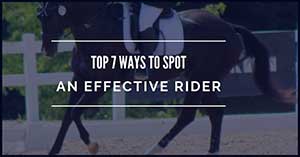
Riding effectively can mean many things to many people. The Merriam Webster Dictionary defines the word "effective" to mean: "producing a decided, decisive, or desired effect"
But in riding horses, it's often difficult to know which part is the horse's doing, and which part is the rider's.
Or is it?
As riders, we are occasionally lucky enough to have a more skilled rider (or trainer) get on our horse. Then we can begin to understand the power of effective riding, because suddenly, our own horse develops far advanced skills - in a matter of minutes! That's when we witness for ourselves the effect the rider has on the horse.
For many, this "journey" toward effective riding is what drives them to keep practicing, keep learning, step out of their comfort zones, try new things, listen to new people, and essentially, try to become better riders. I don't think we can ever reach perfection when it comes to developing skills.
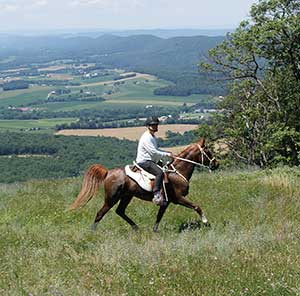
by Tyler Lewis
Competitive Trail Riding measures the fitness of a horse or pony as they travel over a marked trail of 20 to 120 miles. Horses are examined thoroughly before, on the trail and after finishing, by qualified judges and veterinarians. The events are strictly timed and penalties are given for finishing too early or too late.
Horses are judged by how quickly their heart rates drop and other physical and metabolic measurements. The horses who show the highest level of physical fitness win. Most events have different divisions for junior riders and riders of different weights. There is often a division for novice horses and riders with more time or a shorter distance.
What Is the Goal?
The goal is to condition your horse to the highest level of fitness and take care of it so that the horse completes the ride with as little stress as possible. Prizes are awarded according to the fittest horses in each division.
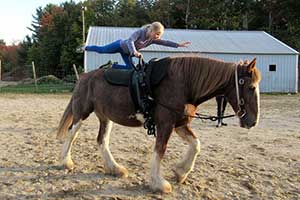
by Maxwell Hauptman
Lamoine, Maine — Dance and gymnastics seem hard enough, given the physical strength, flexibility and coordination demanded. Now picture doing both on the back of a moving horse.
Through Aurora Vaulters, their nonprofit organization, mother and daughter Deb and Cynthia Andrews coach the international equestrian sport at Starlight Horse Farm off Route 184 in East Lamoine.
Their “gentle giant” Rosie, a 13-year-old draft horse, serves as the firm platform for these equestrian gymnasts to execute the mount, basic seat, flag and other compulsory moves.
“Equestrian vaulting is gymnastic dance performed in harmony with a moving horse,” said Deb. As the lunger or trainer, she uses a longe line (a French term meaning long tether) to guide Rosie around a 15-meter circle.
Read more: Equestrian Vaulting is Finding a Foothold Among Children
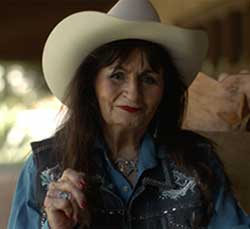
Some people have success handed to them and some have to work for it; Martha Josey has had to work harder than most.
Martha grew up in a small town in East Texas. Her father was one of the first presidents of the American Quarter Horse Association. He had a great passion for horses and taught her how to ride at a young age. Together, they would ride through the cornfields and pastures. These experiences nurtured Martha’s early love for horses. Then tragically, when Martha was 10, her father died suddenly of a heart attack.
In the aftermath of his death, Martha’s mother sold all but one of the family’s horses. Years later, a teenaged Martha attended a rodeo and felt inspired to compete in barrel racing.
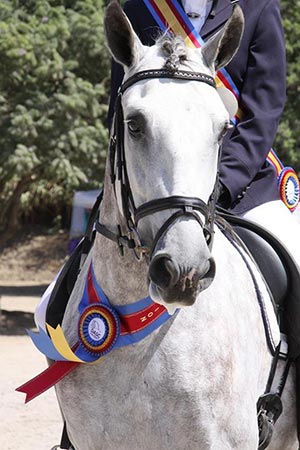
by Lisa El-Ramey
Despite how it might feel with their eyes upon you in the show ring, the judge is actually your ally as an equestrian: Lisa El-Ramey, USEF Senior “S” judge, shares her expertise.
You are ready to go to your first horse show, or maybe you have been to a few. You have prepared yourself and your horse. You have all the right tack, the right clothes, everything is clean, and you are ready… or are you?
Before you enter the show you have one more step to complete: it is important to know what horse show to enter. Not all horse shows are equal, nor should they be. Most riders begin their show careers at a local show facility or farm, at what is widely known as an open show. These competitions are generally attended by local barns and competitors, managed by the local riding club or stable, judged by mostly local judges or trainers, and offer a wide array of classes in western, hunter/jumper, saddleseat, and possibly, dressage.
From these humble beginnings, riders improve their skills and work their way up to their first “rated” show. These competitions are rated by the equestrian organizations that administer them. This could be the United States Equestrian Federation (USEF), breed or discipline specific organization, or the American Quarter Horse Association (AQHA). The USEF oversees many riding disciplines, as well as most breeds. The AQHA is American Quarter Horse specific and while they offer most riding disciplines at their breed specific competitions, entry is limited to Quarter Horses.
- 9 Things You Need to Know if You Want to Ride Horses
- How to Design an Equitation Course
- Up & Coming Young Professional: Geoffrey Hesslink
- Career in Three-Day Eventing for The Pamplemousse
- How Can I Stop Bouncing In The Saddle?
- America’s Most Wanted Thoroughbred, Old Tavern, a Brave Polo Pony with Nerves of Steel
- A Horse With a Different Gear
- When Two Spines Align: Dressage Dynamics
- Three Secrets to Show Ring Success
- My Memorable Mentor
- North American Western Dressage gets punchy with Ranch Horse Western Dressage tests
- Jennifer Malott Kotylo - Movement & Body Awareness Specials for Equestrians, Introductory Video (1:33)
- Mario Dino Di Salvo at the Saratoga Polo Club
- Exercises for Horses That Are Beginning Pole Bending
- Zara Phillips targets Olympic gold with baby Mia by her side
- OMR Sisters Gallop to Glory
- Horse Carriage Driving Enthusiasts Compete on Brean Beach
- Navajo Barrel Racer Is Saluted With ‘Kassidy Dennison Day’ in New Mexico
- Reining: Boemil Twin Robotop - the only Appaloosa in the Individual Finals
- Boyd Martin Sets Record at Jersey Fresh International Three Day Event































